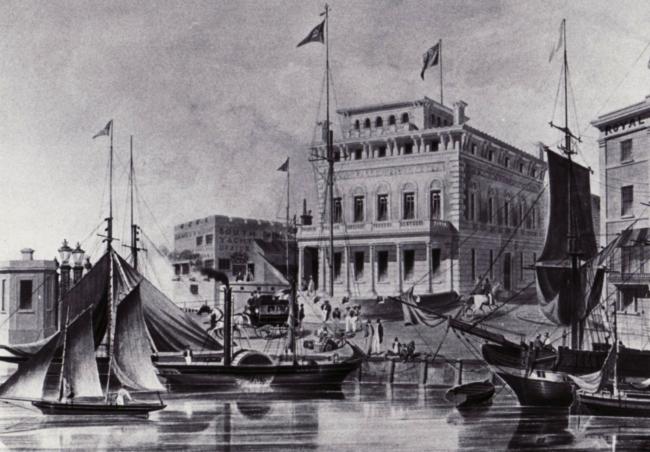IT may be an area now dominated by dull-looking offices, a car park and a smattering of signs banning fishermen - but in the early 20th century things were incredibly different at Southampton’s Town Quay.
Now only the regular comings and goings of the Hythe ferry and the Red Funnel high-speed craft are reminders of a time when Town Quay was a busy dockside.
The Southern Daily Echo explores seven things you may not know about Town Quay.
1) Origins of Town Quay

It’s thought that Town Quay came into being in the mid 14th century, after the construction of the south town wall, and was originally known as Watergate Quay.
Evidence suggests that private quays existed in the late 12th century in both Winkle Street and Porters’ Lane, but Town Quay was likely to have been Southampton’s earliest seaborne trading point.
2) The Harbour Board offices
The decadent and ornate building of the former Harbour Board, now converted into a gentlemen’s club, stood guard over the quay - but back in the 1920s it was an new eye-catching addition to the area.
Previously located on the quay, between the end of the High Street and God’s House Gate, the new purpose-built building was opened on the opposite side of the quay in 1925.
A guide book published in 1926 informed visitors to Southampton: “It may be stated that the new offices for the business of the Harbour Board have been erected on the site of the old premises at the entrance to the quay. They have an imposing appearance, and will undoubtedly add to the importance of this part of the town, and the prestige of the Harbour Board.”
The Harbour Board ceased to be in 1968 but the ornate and impressive structure, with its distinctive dome, clocks and weather vane now functions as a gentlemen’s club.
3) Transport links

All of the waterside berths and land approaches were connected by the board’s own railway lines with the Southern Railway Company’s main lines at Southampton Terminus Station.
The first of the board’s lines opened in 1847 and was a horse-drawn tramway. By 1871 the tramway was connected to railway and in 1876 the horses were replaced with locomotives.
Later came rail connections with the docks.
As Southampton Port grew in size and stature throughout the 1930s, much of the goods traffic moved away from Town Quay.
Because of this, the railway became redundant on May 4, 1970, and the lines were removed nine years later.
4) A very busy quay
In its heyday, Town Quay had a 4,500ft frontage and, according to the guide book, was “equipped with admirable appliances for facility and speed in handling cargo”.
The electric cranes were deemed as being the most modern and hi-tech in the country, and four large warehouses were built on the quay with the capacity to store up to 10,000 tons of cargo.
5) Ownership of the quay
It was on Town Quay that Southampton’s earliest seaborne trade took place, and until 1803 the quay was owned by the town authorities.
In the early years of the 19th century an act of Parliament transferred ownership to the Harbour Commissioners, an incorporated board.
“The town however retained the right of receiving one-fifth of the dues collected from shipping, and this today is a most valuable asset for the ratepayers,’’ said the 1926 guide book.
6) Goods in and out
The bulk of the trade handled at Town Quay consisted of household goods, provisions, manufactured goods, chemicals, cattle feed and timber.
Steamers from many shipping companies sailed from Town Quay to practically all ports in the UK.
7) War usage

The quay played a vital part during the both world wars when military traffic, including barges filled with equipment and troops, travelled across the English Channel.
The railway lines at Town Quay were used as sidings during this time by Southampton Docks.






Comments: Our rules
We want our comments to be a lively and valuable part of our community - a place where readers can debate and engage with the most important local issues. The ability to comment on our stories is a privilege, not a right, however, and that privilege may be withdrawn if it is abused or misused.
Please report any comments that break our rules.
Read the rules hereLast Updated:
Report this comment Cancel